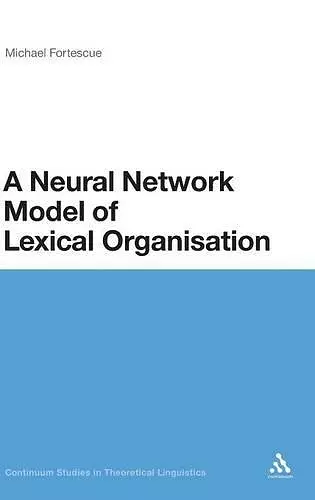A Neural Network Model of Lexical Organisation
Professor Michael Fortescue author
Format:Hardback
Publisher:Continuum Publishing Corporation
Published:10th Jul '09
Currently unavailable, and unfortunately no date known when it will be back

An engaging study of the mental lexicon: the way in which the form and meaning of words is stored by speakers of specific languages.
A study of the mental lexicon - the way in which the form and meaning of words is stored by speakers of specific languages. It provides a principled means of distinguishing those semantic features required by a mental lexicon that have a direct bearing on grammar from those that do not.This is an engaging study of the mental lexicon - the way in which the form and meaning of words is stored by speakers of specific languages. Fortescue attempts to narrow the gap between the results of experimental neurology and the concerns of theoretical linguistics in the area of lexical semantics. The prime goal as regards linguistic theory is to show how matters of lexical organization can be analysed and discussed within a neurologically informed framework that is both adaptable and constrained. It combines the perspectives of distributed network modelling and linguistic semantics, and draws upon the accruing evidence from neuroimaging studies as regards the cortical regions involved. It engages with a number of controversial current issues in both disciplines. This text is intended as a tool for linguists interested in psychological adequacy and the latest advances in Cognitive Science. It provides a principled means of distinguishing those semantic features required by a mental lexicon that have a direct bearing on grammar from those that do not. "A Neural Network Model of Lexical Organisation" is essential reading for researchers in neurolinguistics and lexical semantics. "Continuum Studies in Theoretical Linguistics" publishes work at the forefront of present-day developments in the field. The series is open to studies from all branches of theoretical linguistics and to the full range of theoretical frameworks. Titles in the series present original research that makes a new and significant contribution and are aimed primarily at scholars in the field, but are clear and accessible, making them useful also to students, to new researchers and to scholars in related disciplines.
"Michael Fortescue sets forth "to provide a bridge between neurology and theoretical linguistics" and a patient reader can only conclude that he accomplishes this rather daunting, synthetic task exceptionally well. Neuroscientifically, the author is very well-informed, building on the work of established authorities such as Deacon and Pulvermüller, but mostly on the relatively less-known model of Yves Burnod. As an established cognitive-functional linguist, however, he far surpasses such work in linguistic coverage, rigor and theoretical sophistication. In the first part of the book, Fortescue develops a neurologically plausible model of the mental lexicon, distinguishing systematically between sensori(motor) affordances, and what he calls "mirco-functional affordances" (of key importance for grammar) and "macro-functional affordances" (related to pragmatics and context), and at the same time shows how they are integrated in speech production and comprehension. An important contribution is a three-dimensional graphic representational format, which may at first appear complicated, but is clearly worth the effort, since it possesses considerably more structure than alternative (connectionist) models, and therefore possibly for the first time shows how language could be neurally realized. In part 2, the model is applied to phenomena that have concerned linguists for quite some time: semantic fields, compositionality, grammatical constructions, polysemy (including metaphor and metonymy) and cross-linguistic variation (typology), both casting new light on them theoretically, and showing how they could be treated neuroscientifically. The third and final part is reserved for the most difficult issues: the relations between lexicon, grammar and context in language use and acquisition, and concludes by specifying predictions that can be experimentally tested. All this makes this book truly deserve the rather overused epithet "ground-breaking"". - Associate Professor Jordan Zlatev, Centre for Cognitive Semiotics, Lund University, Sweden
"Ambitious and thought-provoking: finally, a book that bridges the divide between neurology and theoretical linguistics. Professor Fortescue provides an important contribution to neurolinguistic modelling in the area of lexical organisation. This is set to be required reading for anyone interested in the nature of language and how it is represented in the brain."- Professor Vyvyan Evans, School of English and English Language, Bangor University, UK
ISBN: 9781441111432
Dimensions: unknown
Weight: unknown
248 pages